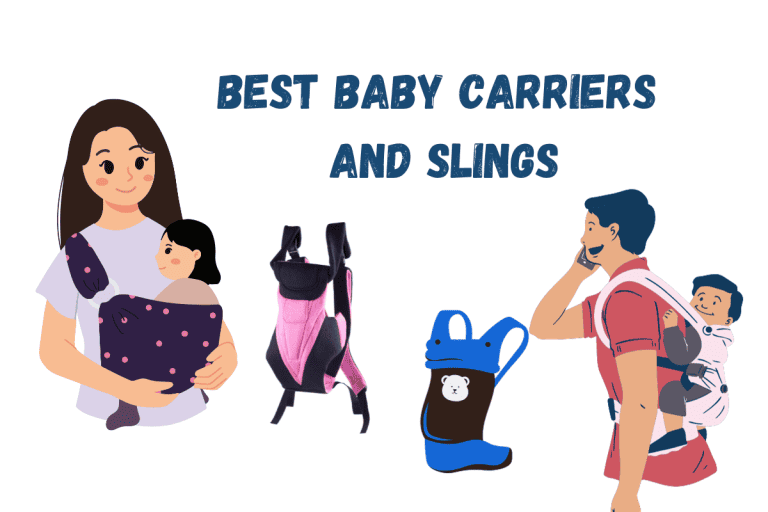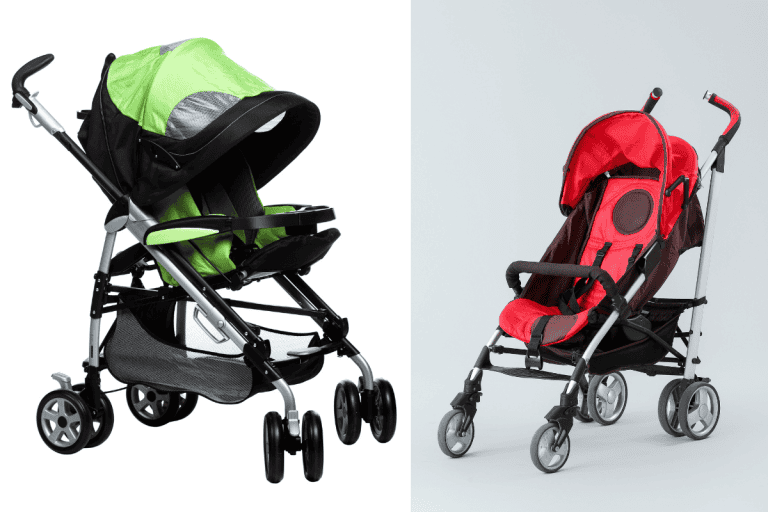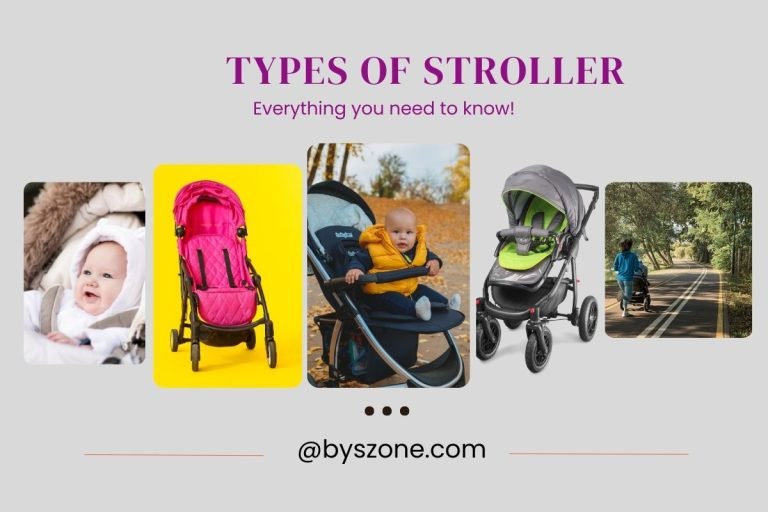How to Wear Baby Carriers: Easy Ultimate Guide About Different Types
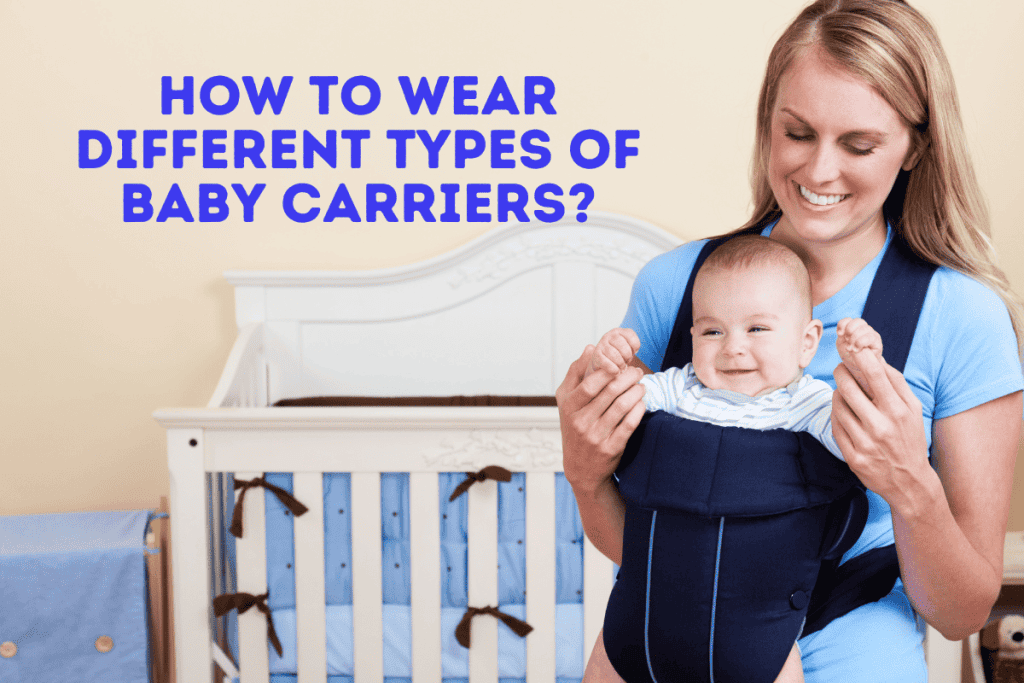
Have you ever wondered how to carry your precious little one as comfortably and securely as possible and how to wear different types of baby carriers? The world of baby carriers opens up possibilities for parents, allowing you to “wear your baby” in various styles that suit your lifestyle and your little one’s needs. If you’ve ever questioned yourself on how to wear baby carriers, you’re in the right place!
In this blog post, we’ll explore the world of baby carriers, providing you with all the knowledge you need to make informed choices for you and your baby. Join us on this informative and inspirational adventure, and let’s discover the perfect baby carrier for you and your little one together.
How to Wear Baby Carriers
Choose a suitable baby carrier, adjust for a secure fit, and position your baby comfortably with proper support. Lift, secure, and check positioning, wearing the carrier snugly for even weight distribution. Prioritize safety, following guidelines, and practice for confidence. For more baby wearing tips, keep reading.
Different Types of Baby Carrier and Baby wearing – Wrap or Sling
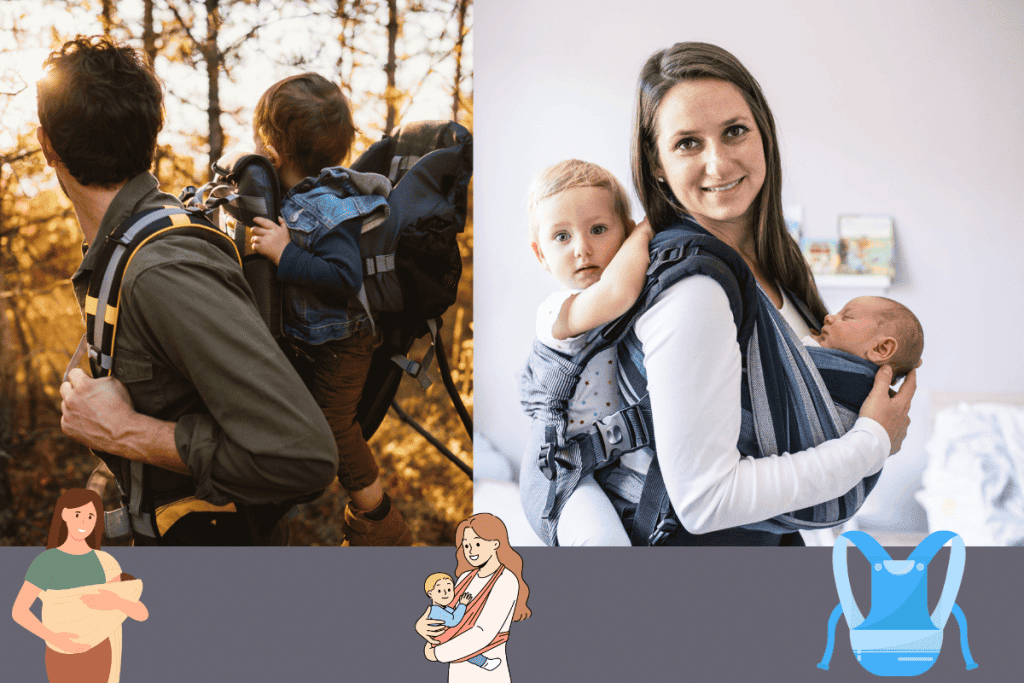
Are you looking to choose a baby carrier for you and your little one? Let’s dive into baby wearing and explore two categories: Soft Structured Carriers (SSCs), baby wraps, and baby slings. Each type has unique features and advantages, making it essential to understand the various options available before making your choice.
Check out our guide on the best baby carriers for top recommendations in each category.
Soft Structured Carriers (SSCs)
Soft-structured carriers, often called SSCs, provide a convenient and adjustable way to carry your baby. These carriers feature adjustable shoulder straps and a supportive structure, making them an excellent choice for many parents.
We’ll discuss the benefits of SSCs, how to customize the shoulder straps for maximum comfort, and address any learning curve concerns to ensure you get the most out of your SSC.
Baby Wraps (Wraps carrier or wrap sling)
Baby wraps come in various styles, including stretchy wraps and woven wraps, each with unique advantages. We’ll guide you through using a baby wrap, particularly focusing on techniques for newborns and older babies. Baby wraps offer an intimate and customizable baby wearing experience, allowing you to “wrap” your baby securely and comfortably.
Baby Slings
Baby slings offer an alternative way to carry your baby, creating a close and comforting bond. We’ll explore the differences between ring slings and traditional slings. If you’re interested in using a ring sling, we’ll provide a step-by-step guide to get you started. Additionally, we’ll cover transitioning to toddler carry positions as your little one grows, ensuring your baby-wearing journey remains comfortable and secure.
Wrapping Techniques
Let’s dive into the essential wrapping techniques for a comfortable and safe baby wearing experience. Whether you choose a baby wrap or a soft-structured carrier, mastering these techniques is key. We’ll show you how to securely carry your baby in front carry, hip carry, or back carry positions, making the process straightforward and enjoyable.
For more tips on selecting the right carrier, check out our guide on how to choose a baby carrier.
How to Wear Your Baby with a Baby Wrap
Wearing your baby in a wrap might seem intimidating, especially if you’re a new parent. But worry not. We’ve got you covered with a step-by-step guide for various types of wraps, including stretchy wraps and woven wraps.
Whether you have a newborn or an older baby, we’ll walk you through the process, ensuring that baby wearing becomes a nurturing and enjoyable experience. Learn more about baby wearing safety for informed choices.
Whether you have a newborn or an older baby, we’ll guide you to make baby wearing safe and enjoyable. Learn more about Are Baby Carriers Safe for Informed Choices.
Utilizing Shoulder Straps in Soft Structured Carriers
Soft Structured Carriers (SSCs) come with adjustable shoulder straps that significantly impact your comfort and your baby’s safety. We’re here to help you achieve that perfect fit, ensuring you and your little one feel at ease during your adventures. Our explanations are clear and concise, making the adjustment process a breeze.
Carrying Your Baby Safely, Safe Baby Carrier
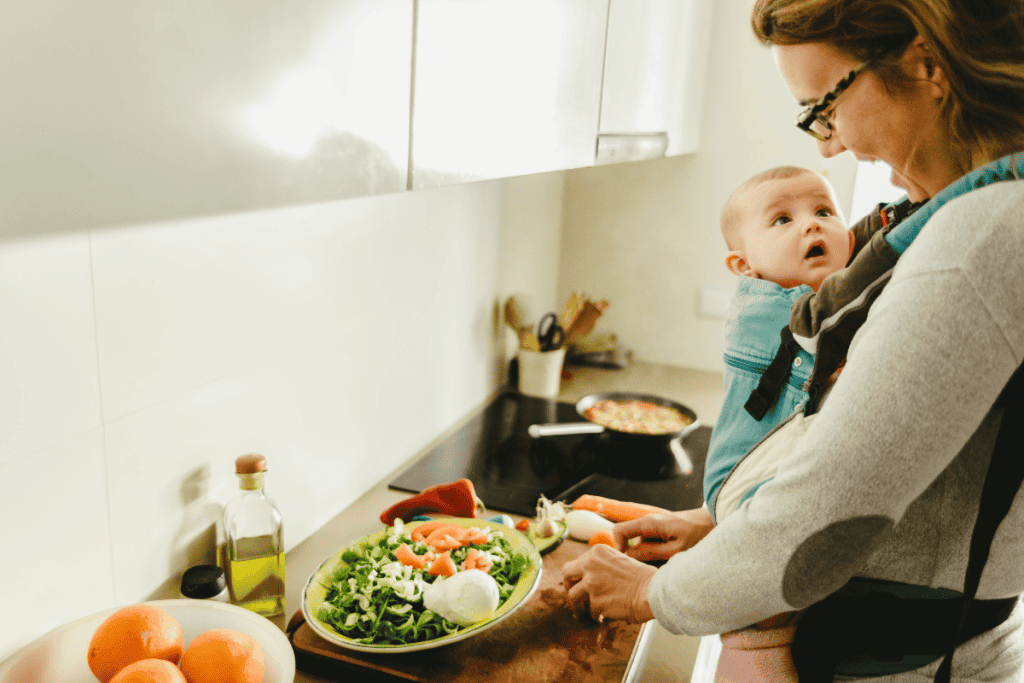
Safety is paramount in the world of baby wearing, and in this section, we’ll delve into essential precautions that apply to all types of baby carriers. From ensuring a secure position to regular checks of buckles and straps, we’ve got you covered with tips to guarantee your baby wearing experience is worry-free and safe.
Safety Precautions for All Carrier Types
Ensuring your baby’s safety and comfort in a carrier is paramount. We guide you in maintaining a secure position, checking buckles and straps regularly, and offering proper head support. These straightforward steps will give you the peace of mind you need as you embark on your baby-wearing journey.
Ergonomics in Baby Wearing
Ergonomics is a key factor in baby wearing, contributing to your and your baby’s comfort and safety. We’ll explain the importance of hip positioning and how to avoid overstretching, particularly when using stretchy wraps.
Additionally, we’ll introduce the concept of adding support pads for extra comfort. Your baby’s well-being is our priority, and our information is easy to understand and implement, ensuring a secure and pleasant baby-wearing experience.
Transitioning to Different Carry Positions – Hands-Free
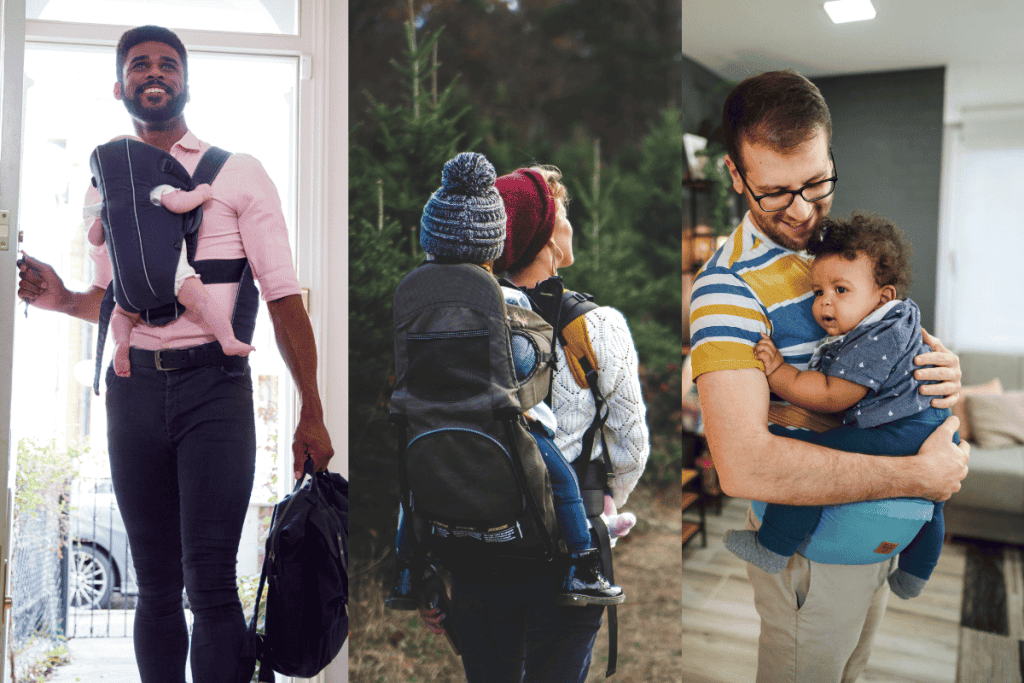
Ready to explore different carry positions? Let’s dive into the wonderful world of baby wearing versatility. Discover the benefits and techniques of front, back, and hip carries to keep you and your little one comfortable and content.
Front Carries – Keep Your Baby Close
Facing Inward for Newborns: Newborns often yearn for the closeness and comfort of facing inward. In this section, we’ll guide you through the steps to ensure your baby’s safety and provide you with peace of mind in this position. You’ll always be able to see your baby’s face, making it a perfect way to bond with your little one.
Facing Outward for Curious Babies: As your baby grows and becomes more curious about the world, facing outward becomes an exciting option. We’ll explain how to transition to this position safely, enabling your baby to explore while still feeling secure and connected to you.
Back Carries
Carrying your baby on your back offers a different perspective and experience for you and your little one. We’ll provide a comprehensive step-by-step guide to ensure you master this technique, making outings and activities more enjoyable for both of you.
Safety Considerations: Safety is paramount when it comes to back carries. We’ll cover essential considerations such as proper buckle fastening, strap adjustments, and maintaining a secure and comfortable position for your baby throughout your adventures.
Hip Carries
Using a Ring Sling for Hip Carry: We’ll show you how to use a ring sling effectively if you prefer hip carries. This method offers ease of use and adaptability, making it an excellent choice for busy parents looking for a convenient baby wearing solution.
Tips for Choosing the Right Carrier Type
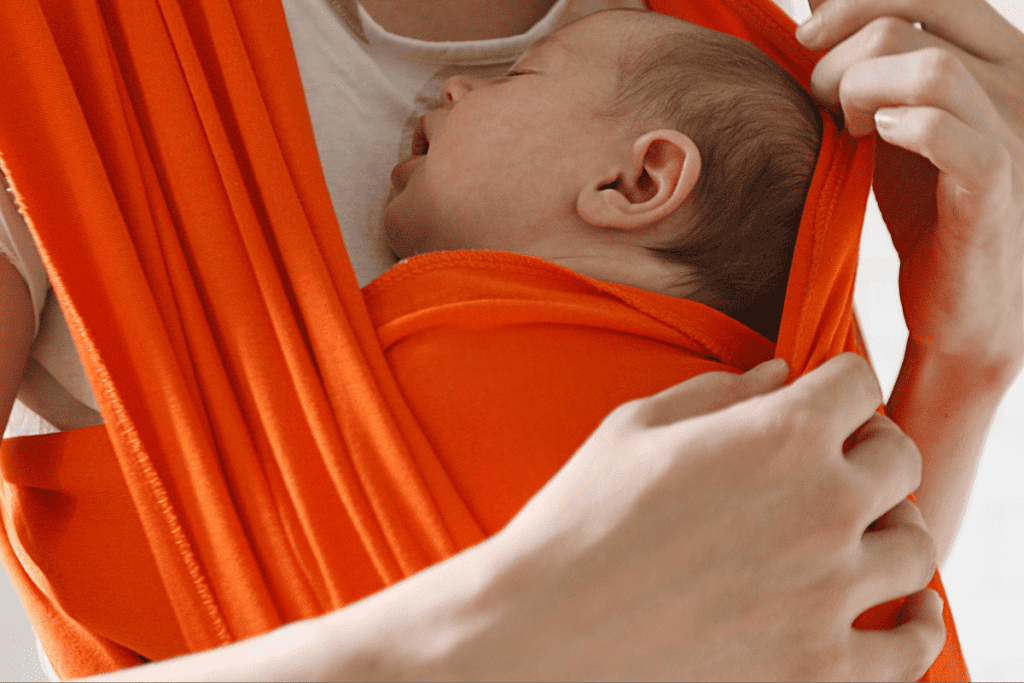
The perfect baby carrier ensures a comfortable and enjoyable baby wearing experience. Let’s explore practical tips to empower you to make an informed decision, ensuring the carrier you choose perfectly suits you and your little one.
Considering the Age of Your Baby – Stretchy Wrap
Newborns and Infants: When it comes to the youngest members of your family, you want a carrier that provides proper head and neck support. Baby wraps, particularly stretchy wraps, and some soft-structured carriers with newborn inserts are excellent choices. These carriers ensure your little one is snug, secure, and comfortable. For newborn-specific items, check out our newborn baby gift ideas.
Toddlers: Your carrier must adapt as your baby becomes curious and active. Look for carriers with weight and age recommendations that match your toddler’s needs. Versatility and durability become key factors as your little one becomes more active. For toddler-specific safety tips, read our guide on safe outdoor play ideas for toddlers.
Assessing Your Lifestyle and Activities Using A Baby Carrier
Active Lifestyles: If you’re an active parent who enjoys hiking, traveling, or outdoor adventures, consider carriers designed for these activities. Features like sturdy buckles, comfortable straps, and ergonomic designs ensure you and your baby stay comfortable during thrilling journeys. For travel-specific gear, explore our best travel strollers guide.
Urban or Suburban Living: For those with a lifestyle centered around city or suburban living, prioritize ease of use and comfort for everyday activities. Opt for effortless carriers to put on and take off, especially when you’re on the go or navigating busy urban settings.
Evaluating Comfort and Ease of Use
Adjustable Features: Look for carriers with adjustable straps, waistbands, and settings. This adaptability allows you to customize the carrier to your body’s unique shape and your baby’s comfort. Adjustable features make a substantial difference in long-term comfort.
Learning Curve: Baby carriers might have a slight learning curve, but don’t be discouraged. You’ll quickly become a baby wearing expert with practice and perhaps a little guidance from tutorials and experienced parents.
Summary
In this informative and inspiring journey through the world of baby carriers, we’ve explored the diverse range of options available, including Soft Structured Carriers (SSCs), Baby Wraps, and Baby Slings, to ensure that you can “wear your baby” in a way that suits your unique lifestyle and your little one’s needs.
We’ve delved into the art of wrapping techniques, ensuring a comfortable and secure experience in various carry positions. Safety and ergonomics have been emphasized to give you the peace of mind you and your baby deserve.
As we conclude this adventure, we invite you to embrace the joys of baby wearing and embark on your journey to find the perfect carrier that suits you and your precious little one, making every moment together truly special. For parents looking to create comprehensive baby care routines, don’t miss our must-have baby bath essentials guide.
FAQs (Frequently Asked Questions)
What is the best baby carrier for newborns?
The best options for newborns are baby wraps, especially stretchy wraps, and some soft structured carriers that offer newborn inserts. For additional newborn care tips, explore our bathing guide for new parents.
Are baby carriers safe for my little one?
Yes, baby carriers are safe when used correctly. Always follow the manufacturer’s instructions, ensure your baby has proper head support, and check for loose straps or buckles regularly. For comprehensive safety information, read our detailed guide on are baby carriers safe.
Can I carry my baby in a back carry position, and how do I do it safely?
You can carry your baby on your back with the appropriate carrier. Please follow a step-by-step guide for back carrying and ensure all buckles and straps are securely fastened.
What are the benefits of hip carry positions?
Hip carries offer convenience and can be a lifesaver when you need to free up your hands while keeping your baby close. It’s a versatile option for quick trips and interactions.
What are the key safety precautions for all baby carriers?
Maintain a secure position for your baby, check buckles and straps regularly, and provide proper head support, especially for newborns. Although a baby carrier can help to hold your baby safely, it is essential to exercise caution and adhere to safety guidelines during its use. For additional baby safety products, check out our guides on baby gates for stairs and best baby playpens.
